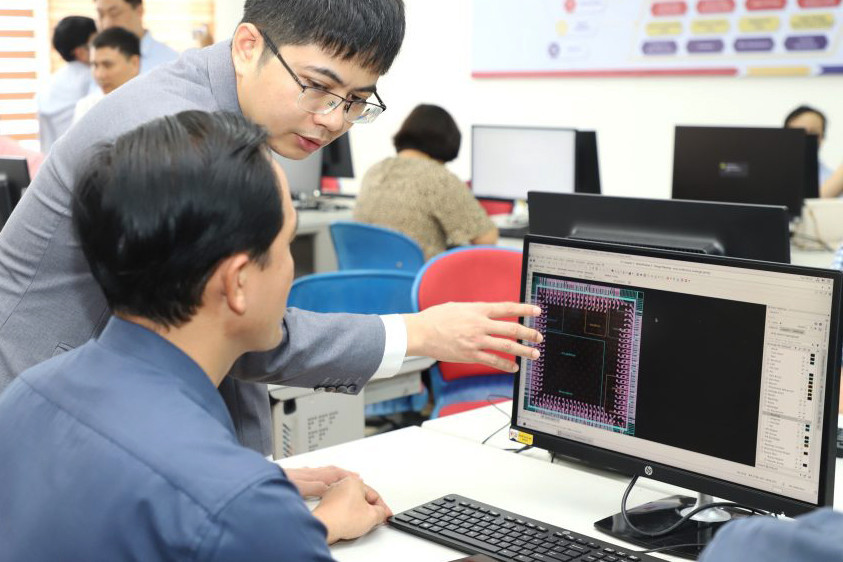
Chip designing is an important stage of the semiconductor value chain which can bring the highest added value.
According to the Authority of ICT Industry under the Ministry of Information and Communications (MIC), Vietnam now has 5,000 engineers for all stages of the chip designing process. Of these, 85 percent of engineers are in HCM City, 8 percent in Hanoi, and 7 percent in Da Nang.
Commenting about the workforce, Trinh Khac Hue, CEO of Corvo Vietnam, who has 20 years of experience in the field, said that Vietnam lacks highly qualified workers with deep knowledge about microchips and semiconductors.
“The semiconductor industry is still in the outsourcing stage, in both design and manufacturing. Vietnam doesn’t have large contingents of technicians at the chief designer level,” Hue said.
“The lack of highly qualified workers will slow down the process of developing and expanding the semiconductor industry,” he warned.
In such conditions, many businesses and universities have tried new approaches to find answer about Vietnam’s workforce.
At the Vietnam Software and IT Service Association (VINASA) meeting at the beginning of the year, FPT president Truong Gia Binh suggested developing chip design engineers under the work-study model.
“In other countries, it takes 18 months to train a software developer to be a chip designer. However, if detailed designs are pre-divided, Vietnamese software engineers will be able to shift to design chips within three months. After that, they will continue to study while working,” Binh said.
He said that, if following this approach, Vietnam’s software and IT service firms can shift to do chip outsourcing very quickly. By doing outsourcing, Vietnam’s technology firms will be able to accumulate experience and begin making chips themselves.
Tran Xuan Tu, head of the IT Institute under the Hanoi National University, is optimistic about Vietnam’s semiconductor workforce.
“We have a firm mathematics foundation and have good general education. Young people are interested in natural sciences. And the third advantage is that Vietnam is in the golden population period,” Tu said.
Hanoi National University is applying both short-term and long-term training in semiconductors. The long-term training program takes 4-5 years.
The IT Institute offers a short-term microchip training program for 3-6 months, called UpSkill program, that starts this year with a training course in Da Nang.
Tu believes that for engineers with deep knowledge about hardware and good coding skills, it will be feasible to train them to undertake another job after three or six months. But the schools must have a good curriculum and good teaching staff.
However, not all engineers will be able to undertake all work just after a short-term UpSkill program. Experience is very important for microchip designers.
Also according to Tu, when recruiting engineers, businesses usually require 1-3 years of experience and they want to know how many projects that candidates have participated in.
The information sheds light on whether the candidates are capable of going from the first to the final stage of the microchip design process.
In general, Tu believes that engineers in majors related to semiconductors and IT can attend short-term training courses to be able to participate in some stages of the microchip design process.
In related news, Ministry of Planning and Investment (MPI), the National Innovation Center (NIC) and Meta Group on March 18 launched Vietnam Innovation Challenge (VIC), a program which seeks solutions to upgrade the quality of the designing, packaging and testing stages in the semiconductor value chain, with priority given to AI apps.
MPI Deputy Minister Tran Duy Dong said Vietnam has emerged as a potential point in the semiconductor industry with its great advantages in strategic position, developed digital infrastructure, technology-proficient people, and creative workforce.
Trong Dat